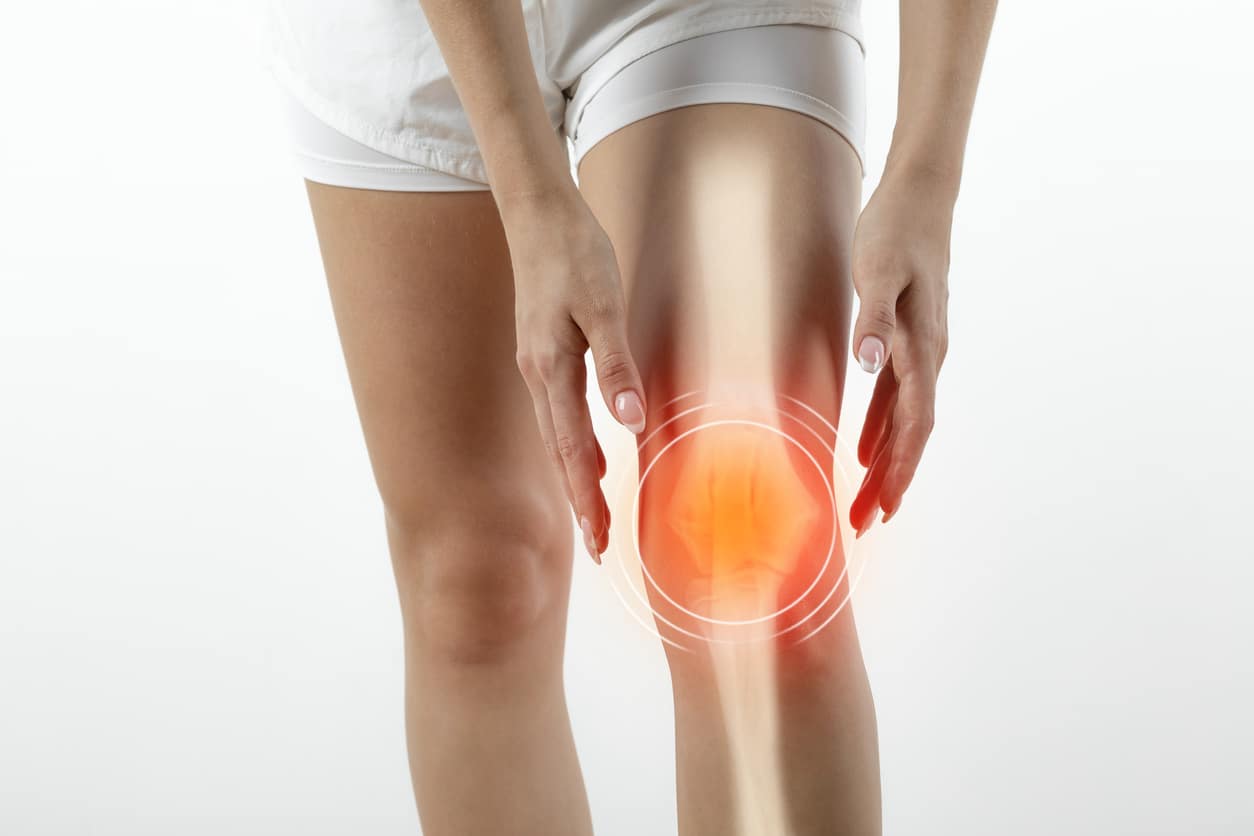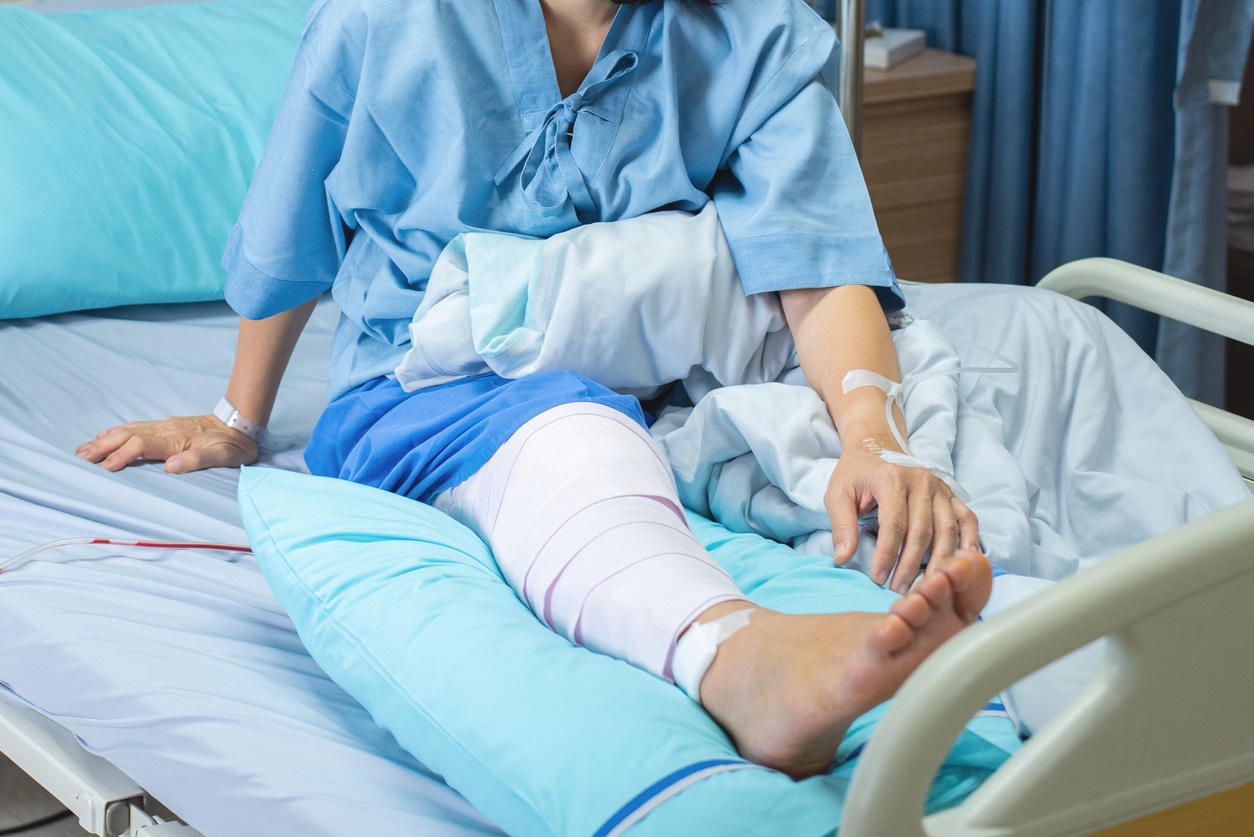Osteoarthritis sometimes develops in only one partition of the knee, while the other two partitions remain relatively healthy. If you have osteoarthritis in only one partition, you may be a candidate for partial knee replacement. A partial knee replacement resurfaces only the damaged cartilage of the knee, preserving the undamaged cartilage. Since a partial knee replacement repairs only one side of the knee, the prosthesis parts are much smaller than they are with a total knee replacement surgery.

Not all patients are candidates for partial knee replacement. You’ll need to discuss your condition and the appropriate treatment options with your healthcare provider.
Advantages of a Partial Knee Replacement
- Minimally invasive surgical procedure
- Faster recovery
- More natural post-surgery motion
- Lower wear rate for many patients
- Greater ability to return to some activities
Who would be a good candidate for Partial Knee Replacement?
Partial knee replacement is only an option for patients with, as you would assume, partially damaged knees. The wear and tear of daily life causes knee deterioration — knee osteoarthritis — but it doesn’t always affect the entire knee. If the damage is limited to a single compartment of the knee, say the medial (inner) or lateral (outer) portions, then partial knee replacement is used to replace the damaged area with metal and plastic.
To be a candidate for partial knee replacement at Summit Healthcare, patients must have first explored various nonsurgical, conservative treatment options, such as anti-inflammatory medications, physical therapy, and possibly corticosteroid injections.
Your knee damage must be limited to only one of the three sections of your knee. Candidates are not eligible for these procedures if they have:
- Inflammatory arthritis
- Significant knee stiffness
- Ligament damage
Formerly, partial knee replacements were typically used for sedentary patients over 60 years of age. Today, younger patients with limited areas of damage are having these procedures.
Before Your Knee Replacement Surgery
You will most likely arrive at the hospital on the morning of your scheduled surgery. Be sure to follow all of your surgeon’s instructions on preparing for surgery:
- Stop eating or drinking 10 hours before surgery.
- If you take a daily medication, ask your knee doctor if you should still take it the morning of surgery.

- At the hospital, your temperature, pulse, breathing, and blood pressure will be checked.
- An IV line will provide fluids and medications needed during surgery.
What type of anesthesia is used during Partial Knee Replacement surgery?
At Summit Healthcare, these procedures are usually done with the patient under general anesthesia. However, if there is more risk involved for a patient with sleep anesthesia, we can use a spinal block, where the body is numbed from the waist down.
How long does Partial Knee Replacement surgery take?
These procedures last from 1 to 2 hours.
Knee Surgery
When your surgical team is ready, you’ll be taken to the operating room. Your surgeon will prepare the bone and remove cartilage from the damaged compartment of your knee. The removed cartilage and bone is replaced with metal coverings that recreate the surface of the joint. These metal parts are typically held to the bone with cement. A plastic insert is placed between the two metal components to create a smooth gliding surface. Your incision will be closed with a special surgical glue.
Partial Knee Replacement Recovery
After your surgery, you’ll be sent to the PACU (Post Anesthesia Care Unit). When you are fully awake, you’ll be moved to your room. Based on your surgeon’s instructions, the nurses will give you medications to ease your pain. An SCD (Sequential Compression Device) may be used to prevent blood clots by gently squeezing then releasing your leg. You may be given medication to prevent blood clots. Soon, our skilled orthopedic team will help you get up and moving.

They know precisely what they’re doing and how to help you recover, heal, and get back to life in the fastest, safest way possible. You may also have physical therapy or occupational therapy after your surgery. After surgery, you will probably be hospitalized for one to three days. Recovery time varies following partial knee replacement surgery, but most people are able to drive after two weeks, garden after three to four weeks, and golf after six to eight weeks. Your surgeon will tell you which activities you can return to and when.
How painful is recovery after Partial Knee Replacement?
Thanks to its more limited goals, partial knee replacement involves less pain than total knee replacement. We will have you moving your knee the same day you have surgery, and full function will return rapidly. Most patients can walk without assistance within two weeks of their surgery. This is because the incision is much smaller, and the healthy areas of your knee are unaffected by the procedure.
With partial knee replacement, the decreased pain and faster return to full motion means you can get back to your normal activities more quickly. A typical patient without complications can expect to return to full activity in just 6 to 8 weeks.
Will I be able to bend down on my knee after a Partial Knee Replacement?
By keeping the undamaged portions of your knee, your knee joint can bend and function more naturally than it can after a total knee replacement. Some patients question whether they can, or should even try, to kneel after having partial knee replacement. But there isn’t any restriction on kneeling.
As part of your rehabilitation at Summit Healthcare, we will include training you how to kneel on your repaired knee. This is a completely safe movement and patients usually only stop kneeling out of fear of damaging their repaired knee. The problem with this overly restrictive line of recovery is that kneeling is important for many movements and activities. For instance, older patients need to be able to get up off the floor in case of a fall. If they cannot kneel, they cannot get back up. Other activities from gardening to household chores require kneeling. You will not need to lose this ability because of your partial knee replacement.
Risks and Complications
As with any surgery, partial knee replacement surgery carries possible risks and complications. The following risks include:
- Reaction to the anesthesia
- Blood clots
- Infection
- Dislocation of the joint or loosening of the prosthesis
- Fracture
- Wearing out the prosthetic
- Damage to nearby blood vessels, bones, or nerves
- Pain
When to call your Orthopedic Surgeon?
Once at home, call your doctor if you have any of the symptoms below:
- An increase in pain not relieved by your pain medicine
- Unusual redness, heat, or drainage at the incision site
- Fever over 101.0°F (38.3°C)
